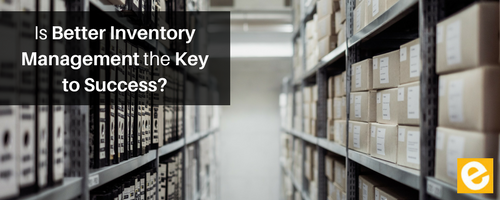
Is Better Inventory Management the Key to Success?
Is Better Inventory Management the Key to Success?
Construction is an industry with an annual capitalization of $10 trillion worldwide, yet has shown minimal growth in productivity over the last several decades. With labor shortages and the need to stay competitive by integrating modern technologies, it can be difficult for firms to focus on refining the fundamentals of their business. Still, a failure to manage inventory adequately couldn’t lead to total disaster, right? Think again.
This article reviews the process of inventory management in the construction business and assesses the overall effect of poor practices on project outcomes – and they aren’t pretty. In a business with narrow profit margins and tight time constraints, the ability to manage inventory effectively is one of the main determinants of whether a project is completed on time.
Whether inventory management is crucial to your own business, we’ll leave you to decide, but we hold the following truths to be self-evident:
1. If you don’t have the correct materials at your job site, you can’t do any work.
2. If you don’t have effective inventory management, you won’t have the correct materials.
3. Effective inventory management is uncommon because it is hard to do.
Table of Contents
What is Inventory/Materials Management?
Inventory management can be described as the planning, identification, procurement, storage, receiving, and distribution of materials from suppliers or other sources to the intended site of usage. We can examine each step in the context of a larger project to understand the need for an adequately managed supply chain.
Suppose your firm obtains a contract to build a new skyscraper in Dubai. You plan to install drywall on the 42nd floor on September 19th, and this is critical because you have other folks coming in to do flooring and other work the following week, so it must be complete on time. How will you ensure that the correct materials are available at the job site when contractors arrive?
Planning – You must determine what quantity of materials are needed for the job. If you have materials in your warehouse, they should be routed to the jobsite, but you will likely have to purchase more.
Identification – Once you’ve elucidated what you need to buy, you’ll need to prepare a shopping list and double check it so you’re sure that you’ve identified all the job requirements.
Procuring – This is the purchasing step – you’ll have to look at different suppliers and purchase the product that offers the quality you need at the best price.
Storage – You need a place to store the materials. It is common for large construction firms to maintain a storage facility that is proximal to the site of a large job, to facilitate easy transportation of materials to and from the storage facility.
Receiving – When the materials are delivered, you’ll need staff to receive them from the delivery person, conduct an inventory check to ensure that the order was filled correctly, and store the materials in a way that they can be readily accessed when needed.
Distribution – Finally, when the materials are ready for use, you need the means to transport them to the right location at the right time, so the right people can get a hold of them and use them to complete the work!
The goal of effective inventory management is simple – to get the right quality of materials, in the quantities needed for the job, to the right place, at the right time, and at a cost where you can turn a profit. When all those things happen together, construction firms can expect to do very well.
Addressing the Challenges of Effective Inventory Management
To understand how effective inventory management can change results for your business, all you need is to realize the number of barriers that your competitors are facing when it comes to implementing an effective inventory management system. Getting the materials that you need on your job site at the right times is far from a simple task – here are just a few of the challenges you’ll face:
-
Undefined scope of work prevents you from planning material needs
-
Incomplete drawings or plans provided
-
Difference between plans and specifications
-
Unclear or non-existent communications
-
Availability of the materials needed in the requisite quantities
-
Pricing
-
Unrealistic delivery schedules
-
Lack of conformance to requirements
-
Wrong materials delivered
-
Materials delivered late, or at the wrong time
-
Theft or damage during materials delivery
-
Inadequate storage space for materials available
-
Storage infrastructure unavailable or inadequate (cannot protect materials from water damage, enclosed storage protection not available)
-
Difficult to maintain security of materials storage site
Anyone who can overcome these barriers to have the correct construction materials delivered on-time is a superstar construction manager and worth their weight in gold. With so many ways to go wrong, it’s a wonder that anything gets completed on time!
Conclusion
In an industry where 98% of large projects go over time and over budget, improvements in inventory management techniques and practices are a vital aspect of staying competitive and earning more profits. Effective inventory management limits waste while keeping your project on track by ensuring the timely delivery of materials to the job site. Innovative inventory management software is one of the ways that the smartest firms are trying to stay more competitive in the coming year.